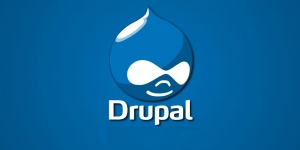What to Do After You Have Built A New Website

You can have the best looking website in the world but it 'aint going to do much if no one visits it. If you have just built a new website or have upgraded your current site, here is some very useful advice on what to do next. It is important to follow through with these processes to ensure that everything runs smoothly and you start increasing your visitors. After all having lots of people visit is the number one reason why we all have websites right?

Make sure pages are redirected (existing websites)
This is a pet hate of mine. I see it a lot - after a new website is built the pages are not redirected. You will have seen the 404 errors when you visit a page that does not exist and this is a real pain. To overcome this you have to make sure that the URLs of your old pages are redirected to the same pages on your new website. There are different ways of doing this including through a plugin/module for your CMS or creating entries in the '.htaccess' file (if you are a little more tech-savy). If you don't do this there will be a long period where people click on your existing Google search results or other links which go to a 404 page. This is very bad for user experience and SEO.

Tell search engines about your new site and pages
An important part of every website is the sitemap. This is a file that lists all the pages and their URL so that search engines like Google know they are there. Typically this is done through a plugin or module for your CMS or manually by making a .xml file. Using a plugin for your CMS is always easiest because a good one will compile all your pages and automatically add new ones so that it is always up to date. Simply search for 'XML Sitemap' in your CMS's plugin directory for this. Furthermore there may be some pages you don't want the search engines to see like private pages, and these can be configured to not be added to the sitemap. After you have a working sitemap file it is important to submit it to the search engines. The main places to do this are Google Webmaster Tools (www.google.com.au/webmasters/) and Bing Webmaster Tools (www.bing.com/toolbox/webmaster)

Configure Webmaster
As well as sitemap submission, Google webmaster has some other good tools you can utilise. One of these is the URL parameters, especially if you have a shop site with lots of dynamic pages (from the search criteria). These can often create duplicate content on your site which is a big no no for Google. Configuring Google to ignore URL parameters such as '?sort' and '?filter' can help stop this happening. The other good things to do in Webmaster including setting your target country (if applicable), using structured data if you want your search listings to be unique for products/blogs etc. and to keep an eye on the 'Not Found' pages and fix these. This is done at the start, but especially monitor these over the first few weeks in the transition period after upgrading your current website.

Basic Backlinks
It is a good idea to have your site listed in a FEW larger directory and social media sites to start building a backlink profile. Don't overdo these as it is not good to have hundreds of links from directory sites especially, but 4 or 5 of the best ones will be a good idea. In Australia we like to use Yellow Pages (www.yellowpages.com.au/), TrueLocal (www.truelocal.com.au/), and most importantly get listings from some of the authority sites relevant to your industry. An example of this could be a link from MYOB's site if you are an accountant that specialises in MYOB. Additionally it is a good idea to create social media accounts and link these to your website and vice versa. The best ones are probably Google Plus, Facebook and Twitter. If you have a business, it is best to create separate business accounts/pages for these than your individual profiles.

Google Plus & Related Services
Special mention must be made of Google Plus (https://plus.google.com/) because there is a lot you can do with this. It is always a good idea to create a Google Plus profile (which can be used with your Webmaster account too). Once you have done this you can make use of all the very helpful things Google offers. The most important would be to create a Google Places (www.google.com.au/business/) listing, especially if you are a local business. This displays your website/business in the special location listings and is a fantastic for local businesses for local searches. Another good tool is Google Merchant (www.google.com.au/merchants/) where you can upload product data and use it with Google Shopping and a lot of other services. This is very handy if you have an online store. If you want to give your website a real kickstart, you can also look at advertising with Google AdWords (www.adwords.google.com). Even with a limited budget you can start generating visitors with a properly designed campaign.

Submission to lesser known search engines
Apart from the big boys Google and Bing there are other search engines that some people do use like Yahoo (http://search.yahoo.com/), Ask (http://www.ask.com/), AOL (http://search.aol.com/aol/webhome), Wow (http://www.wow.com/), Web Crawler (http://www.webcrawler.com/) & My Web Search (http://home.mywebsearch.com/index.jhtml). Although these are nowhere the reach of Google, submitting listings to your site from here can really help get new visitors too.

Keyword Research & New Content
All the search engines like to see your website is active. Therefore creating new content regularly such as blogs, articles, new pages etc. is very important to help increase the scope in which you rank as well as giving visitors a reason to come back to your site. Of course it is very important that this content is well written and useful to your prospective visitors, so make sure it is not 'spammy' and actually of interest to people. Furthermore to this, it is very beneficial to do a little research on what new content to make, as well as your current content. The best way to do this is to use Google Keyword Planner (https://adwords.google.com/KeywordPlanner). Here you will enter in as many keywords that are applicable to website and then sift through them analysing how many searches they get, competition and also trends. From this you can then use good keywords that have lots of searches and less competition to structure your current and new content around. For example 'best way to bake a cake' might have lots of searches and not much competition so you could write an article on how to bake a cake to hopefully attract new visitors for this. Of course it is best to focus on things you know about and are relevant to your main website content.
On-site SEO is part of this process, however it can be quite advanced. If you would like to know more about the services we offer for this please vist our SEO section here.

Make sure your website is running quick
Although more of a developer role, it is important to make sure your website is running quickly and the pages load fast. There are many factors that impact this and one of the best places to find out how your website is running is http://www.webpagetest.org/. We always use this after we upload a new site to the live server so we can test it properly in the live working environment. It is also a good idea to keep testing it over time to ensure that everything is running as efficiently as possible. Doing this makes sure when people visit your site that they have a good experience with pages loading quick and less waiting more browsing!

Final Advice...
Of course there are many other things you can do to make sure your website is expanding it's reach, however the advice listed above is definitely enough to keep you going for a while. While you can do most of this your self, it may be an idea to get experts to help out with parts that you are not sure of or to just take over the whole campaign on your behalf. We can help with this and have a great deal of experience in helping our clients get the most from thweir sites. Like most things that are worth doing, there is work to be done and ongoing effort required. As a website owner it is really good to get involved in this process because at the end of the day you know your business better than anyone else. So the best advice is to follow through on some of the steps in this article and just keep at it over time. Doing this you will always keep growing and moving forward.






